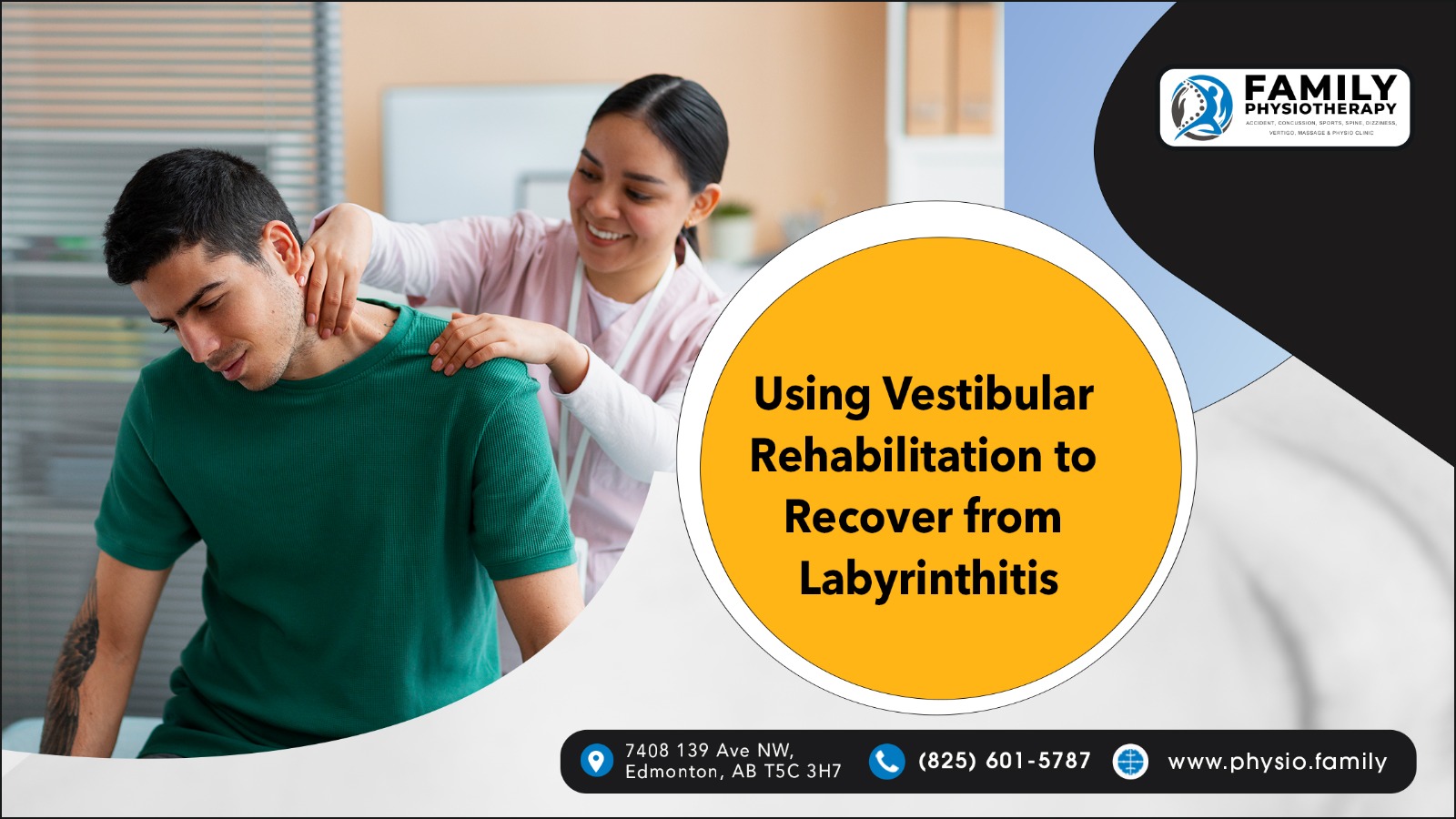Using Vestibular Rehabilitation to Recover from Labyrinthitis
Vestibular physiotherapy is aimed at treating vestibular disorders and related symptoms. The vestibular system, found in the inner ear, is accountable for maintaining balance, spatial orientation, and coordination of eye movements. When this system is impaired due to injury, disease, or other factors, individuals may experience symptoms such as dizziness, vertigo, imbalance, nausea, and visual disturbances. Vestibular physiotherapy in Edmonton helps to improve the individual’s ability to function in daily activities, reduce symptoms, and enhance quality of life despite vestibular dysfunction.
Role of Vestibular Rehabilitation in Labyrinthitis Treatment:
Vestibular rehabilitation can be highly beneficial in the recovery process for individuals experiencing labyrinthitis, a condition characterized by inflammation of the labyrinth within the inner ear, where the vestibular system resides, which is accountable for balance and spatial orientation. Labyrinthitis often manifests with symptoms such as vertigo, dizziness, imbalance, nausea, and sometimes hearing loss.
Here’s how vestibular physical therapy, specifically vestibular rehabilitation, can aid in the recovery from labyrinthitis:
Symptom Management:
Vestibular rehabilitation techniques can help alleviate symptoms of vertigo and dizziness associated with labyrinthitis. Habituation exercises, for example, gradually expose individuals to movements that provoke symptoms, helping the brain adapt and reduce sensitivity to these movements over time. Here are some common approaches used:
Habituation Exercises:
These exercises gradually expose individuals to movements that provoke symptoms of vertigo and dizziness. By repeating these movements in a controlled manner, the brain adapts and reduces sensitivity over time. Examples include:
Brandt-Daroff exercises: These involve a series of head movements and positional changes performed multiple times a day to habituate the vestibular system.
Cawthorne-Cooksey exercises: These consist of a combination of eye, head, and body movements designed to promote adaptation to vestibular stimuli.
Balance and Gait Training:
Labyrinthitis can disrupt normal balance control and walking stability. Vestibular rehabilitation includes exercises to improve balance and gait, such as standing on unstable surfaces, walking with eyes closed, or performing specific balance tasks. Labyrinthitis therapy exercises help individuals regain confidence in their ability to move safely and effectively. Here are some common approaches used:
Standing on Unstable Surfaces:
Performing balance exercises on unstable surfaces challenges the vestibular system and proprioception, enhancing balance control. Examples include:
- Balancing on a foam pad or balance board with feet together or in various stances (e.g., tandem stance, single-leg stance).
- Using a balance disc or BOSU ball to perform dynamic balance exercises such as weight shifts and reaching movements.
Dynamic Balance Activities:
Incorporating dynamic movements into balance training challenges the vestibular system and helps improve balance reactions. Examples include:
Reaching exercises: Reaching in different directions while standing on one leg or on an unstable surface to improve balance control.
Weight shifting: Shifting body weight from side to side or forward and backward to improve stability and weight distribution.
Gaze Stabilization Exercises:
Labyrinthitis can cause visual disturbances, including difficulty maintaining focus during head movements. Gaze stabilization exercises involve practicing specific eye and head movements to improve visual stability and reduce symptoms of dizziness or vertigo triggered by head motion.
Smooth Pursuit Exercises:
- Follow a moving target smoothly with your eyes while keeping your head still.
- Start with slow, controlled movements and gradually increase the speed and complexity of the target’s movements.
- Practice tracking moving objects in different directions (up, down, left, right) to challenge visual tracking abilities.
Saccadic Eye Movement Exercises:
- Rapidly shift your gaze between two fixed points without moving your head.
- Begin with simple horizontal eye movements and progress to vertical and diagonal movements.
- Increase the speed and accuracy of eye movements over time.
Functional Rehabilitation:
Vestibular physiotherapy in Edmonton focuses on improving functional abilities and quality of life. Activities tailored to daily tasks and activities are incorporated into the treatment plan to help individuals regain independence and confidence in performing activities of daily living.
Functional Mobility Tasks:
Sit-to-stand transfers: Transitioning from sitting to standing and vice versa to improve lower limb strength and mobility.
Getting in and out of bed or a chair: Practicing safe and efficient techniques for bed and chair mobility to enhance independence in daily living activities.
Dual-task Training:
Performing balance or mobility tasks while simultaneously engaging in cognitive tasks, such as counting backward or naming objects, to improve dual-task performance and real-world functional abilities.
Stress Management Techniques:
Stress can exacerbate symptoms of labyrinthitis. Mastering relaxation techniques like deep breathing, meditation, or progressive muscle relaxation can be instrumental in managing stress and reducing symptoms.
Deep Breathing Exercises:
Practicing deep breathing techniques, like diaphragmatic breathing or belly breathing, can help activate the body’s relaxation response and reduce stress levels.
Guided Imagery:
Guided imagery involves visualizing peaceful and calming scenes or experiences, which can help distract from symptoms and induce a state of relaxation.
Restoring Balance:
Family Physiotherapy in Edmonton stands as a vital and effective approach to aiding individuals recovering from labyrinthitis and other vestibular disorders. Through personalized treatment plans and targeted exercises, individuals are empowered to regain their balance, reduce symptoms of dizziness and vertigo, and reclaim their independence in daily activities. Vestibular physiotherapy in Edmonton fosters not only physical recovery but also enhances overall well-being and quality of life. As a cornerstone of rehabilitation for vestibular conditions, vestibular physiotherapy continues to offer hope and support to those navigating the challenges of labyrinthitis and similar disorders, guiding them toward a path of recovery, confidence, and renewed vitality.

